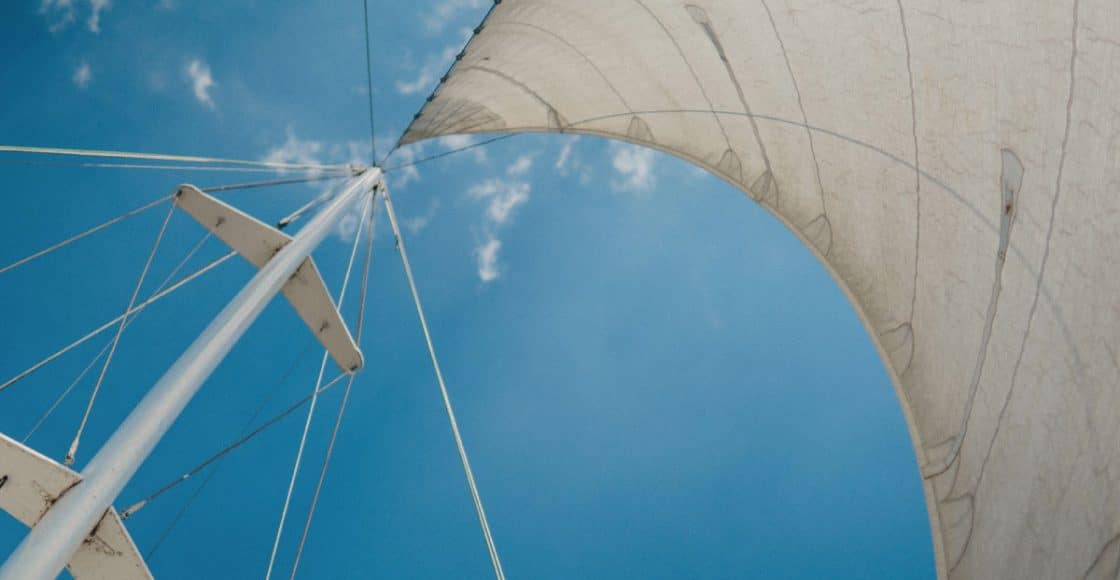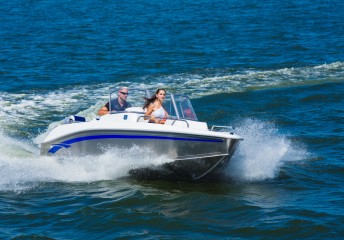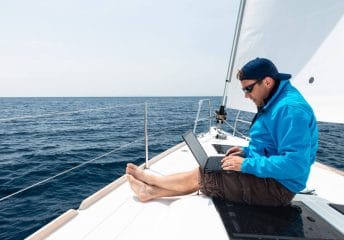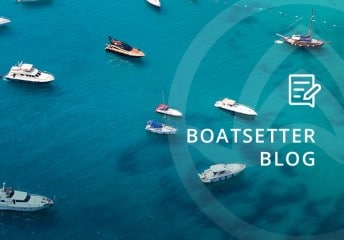Sailing Explained: How to Sail Against the Wind
Last Updated on September 18, 2023 by Boatsetter Team
Sailing is a beautiful and majestic sport. It’s pretty clear how a boat sails downwind with the breeze pushing against the sails, but have you ever wondered: how do you sail against the wind?
Ready to set sail? Discover sailboat rentals near you
Sailing is about aerodynamics & hydrodynamics

The aerodynamics is how wind acts on the sails, and the hydrodynamics is how forward motion is created with the help of underwater lateral resistance. Sails are basically airplane wings set on end. As the wind comes in contact with the forward end of the curved foil (the luff of the sail) it splits, passing on both the downwind (leeward) and upwind (windward) sides.
The wind on the leeward side travels a longer distance due to the curvature of the sail and creates a low-pressure area, while the wind on the windward side travels a shorter distance and reaches the aft end faster. The combination creates an aerodynamic lift that “pulls” or “sucks” the boat forward.
That’s only half the equation: pressure in the sails will still push the boat more sideways than pull it forward. That’s where the keel or centerboard below the waterline comes into play by transferring sideways pressure into forward momentum.
With the lift of the sails and the lateral push or hydrodynamics of the keel, upwind sailing is achieved. Where the wind concentrates its force in the sails is called the center of effort while the keel below is called the center of lateral resistance.
READ MORE: 7 Best Sailboat Accessories
No, boats cannot sail directly into the wind
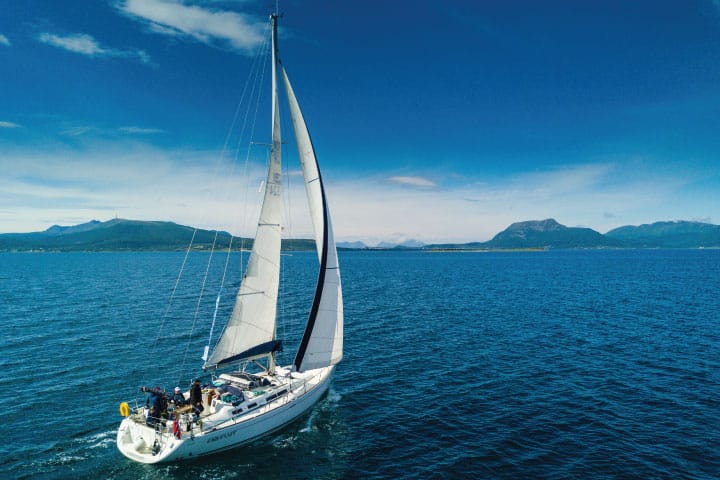
Instead, they make progress toward an upwind mark by sailing at angles, which are called “points of sail.” Close hauled is roughly 45 degrees off the true breeze, a close reach is 60 degrees, and a beam reach is at 90 degrees. When sailing lower (greater degrees) than a beam reach, you’re no longer sailing upwind.
If the bow faces directly into the wind, the boat cannot make forward progress and is said to be “in irons.” When sailing very close to the wind direction, a boat is said to be “pinching” or “beating” which isn’t a very efficient way to sail.
Changing direction when sailing upwind is called “tacking” and it’s when the bow of the boat is brought through the eye of the wind. Turning upwind is called “heading up” and turning downwind is “falling off.” When the wind first passes over the starboard rail, you’re on a starboard tack and vice versa.
Boats sail in true wind, which is the breeze that’s actually blowing at a given speed and angle. However, the boat is actually responding to the apparent wind, which is the angle and speed of the breeze that is felt on a moving vessel.
Upwind sailing is a craft
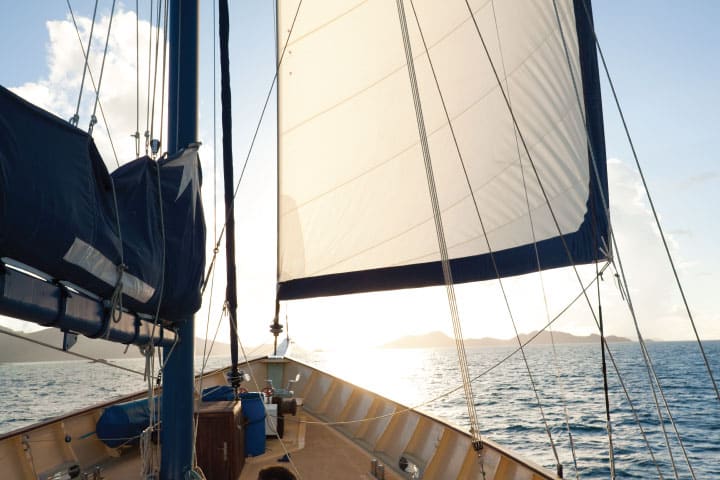
While the basics of upwind sailing are simple, it can take years to master the nuances of sail trim (moving sails in and out) and sail shape (making other adjustments to change the way the wind affects the sail). The sails are sheeted in (made flatter) by pulling in the sheeting lines or loosened to create a “belly” or depth in the sail.
Pro tip: At age 16, Jessica Watson became the youngest person to sail around the world without stopping and without assistance. Talk about inspiration!
Sheeting in (bringing the sails closer to the centerline) enables the boat to point higher (sail closer to the true wind) while easing out (loosening the aft end of the sail) creates more power. If a sail begins to luff or flutter when sailing upwind, it needs to either be trimmed in or the boat must change direction and fall off the wind to get more efficient airflow over the foils.
Learning on a small sailboat is ideal as they react immediately to changing conditions, so you learn the cause and effect of your actions on sail trim. The theory is easy. The actual practice takes years to perfect, and it’s what separates good sailors from newbies.
Once you have it down, you can (eventually) sail or zig-zag your way to just about anywhere. Perhaps then you can charter a larger boat from a peer-to-peer rental service like Boatsetter and explore new watery horizons.
Sailor, there’s more where that came from:
- 10 Best Beginner Sailboats
- Types of Sailboats
- Do Sailboats Have Motors?
- Sailing, Destinations, & Boating Basics: Explore the Boatsetter blog
About us
Boatsetter is a unique boat-sharing platform that gives everyone— whether you own a boat or you’re just renting — the chance to experience life on the water. You can list a boat, book a boat, or make money as a captain.
List your boat & start earning an avg. of $20K yearly with Boatsetter
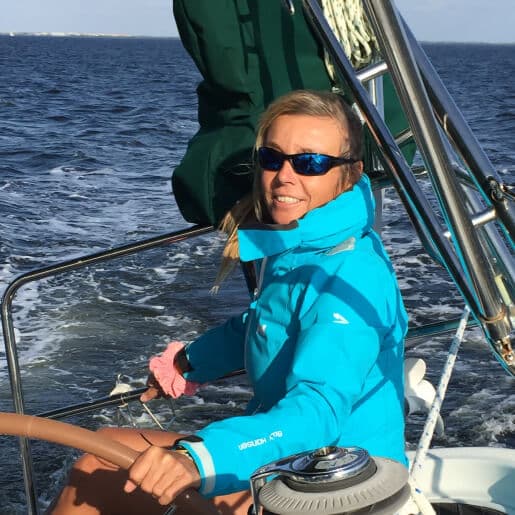
Zuzana Prochazka is an award-winning freelance journalist and photographer with regular contributions to more than a dozen sailing and powerboating magazines and online publications including Southern Boating, SEA, Latitudes & Attitudes and SAIL. She is SAIL magazines Charter Editor and the Executive Director of Boating Writers International. Zuzana serves as judge for SAIL’s Best Boats awards and for Europe’s Best of Boats in Berlin.
A USCG 100 Ton Master, Zuzana founded and manages a flotilla charter organization called Zescapes that takes guests adventure sailing at destinations worldwide.
Zuzana has lived in Europe, Africa and the United States and has traveled extensively in South America, the islands of the South Pacific and Mexico.
